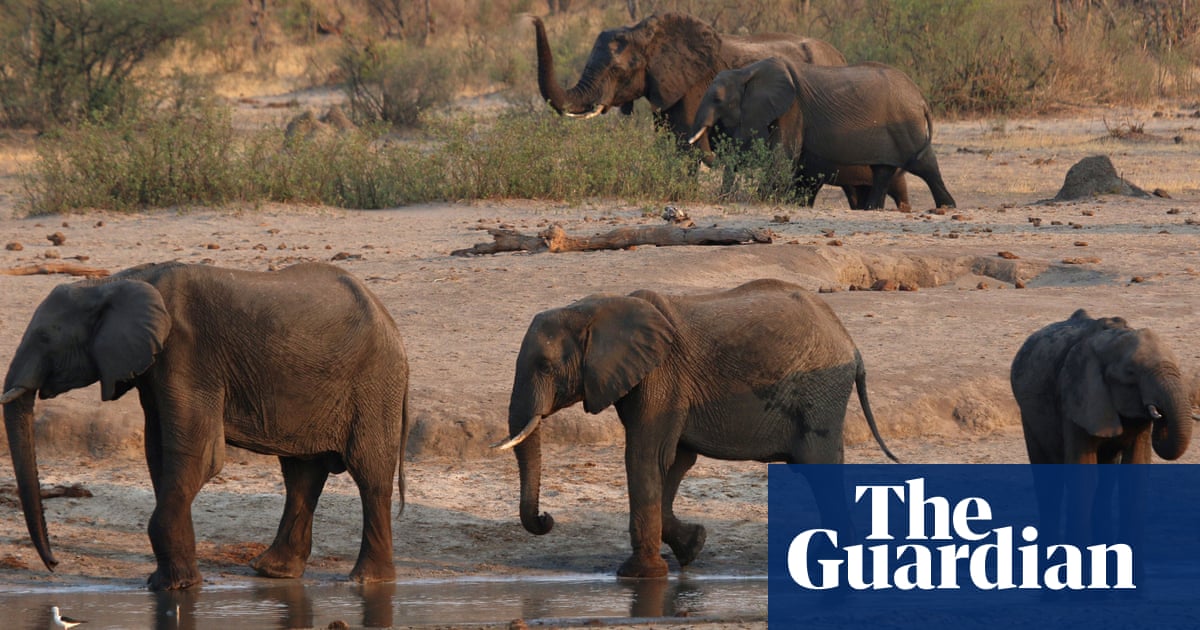
Zimbabwean authorities have set out plans to cull 200 elephants to feed communities facing acute hunger amid the worst drought in four decades.
The El Niño-induced drought has wiped out crops across southern Africa, affecting 68 million people and causing food shortages across the region. In Zimbabwe, 7.6 million people are set to face food insecurity from January to April next year, the height of the lean season, according to the World Food Programme.
“We can confirm that we are planning to cull about 200 elephants across the country. We are working on modalities on how we are going to do it,” said Tinashe Farawo, a spokesperson for the Zimbabwe parks and wildlife authority.
He said the elephant meat would be distributed to communities in Zimbabwe hit by the drought. However, some conservationists criticised the plans, saying there were better solutions for helping to feed people whose crops had failed.
The cull, the first in the country since 1988, was first reported on Friday, and follows neighbouring Namibia’s decision last month to cull 83 elephants and distribute meat to people affected by the drought.
“Regarding the hunger situation, meat is not a staple in Zimbabwe. What we need is grain,” said Farai Maguwu, the director of the Centre for Natural Resource Governance, a non-governmental organisation.
When droughts are so intense, human-wildlife conflicts can escalate as resources become scarcer. Last year, 50 people were killed in elephant attacks in Zimbabwe.
Maguwu argued that more boreholes should be drilled for both humans and elephants to drink from in the affected areas and that, if there are still issues, elephants should be relocated to national parks with fewer animals, rather than culling them.
The elephants will be culled in Hwange, Mbire, Tsholotsho and Chiredzi districts, in areas where authorities said the animals have clashed with humans.
More than 200,000 elephants are estimated to live in a conservation area spread over five southern African countries – Zimbabwe, Zambia, Botswana, Angola and Namibia – making the region home to one of the largest elephant populations worldwide.
Farawo said the culling is also part of the country’s efforts to decongest its parks, which he said can sustain only 55,000 elephants. Zimbabwe is home to more than 84,000 elephants.
“It’s an effort to decongest the parks in the face of drought,” he said. “The numbers are just a drop in the ocean because we are talking of 200 [elephants] and we are sitting on plus 84,000, which is big.”
This year’s drought could kill more of Zimbabwe’s elephants. In January 2024 during the previous drought season, at least 160 elephants died in Hwange, due to water and food shortages and baking temperatures. In late 2019, more than 200 elephants died amid a lack of water.
Late rains at the end of 2023 delayed crop planting and a hot, dry spell in early 2024 then caused the harvest to fail in most of the country.
Zimbabwe, which has been lauded for its conservation efforts and growing its elephant population, has also been lobbying the UN’s Convention on International Trade in Endangered Species to reopen the trade of ivory and live elephants.
Zimbabwe has about $600,000 (£450,000) worth of ivory stockpiles that it cannot sell.
Reuters contributed to this report
Source: theguardian.com


















